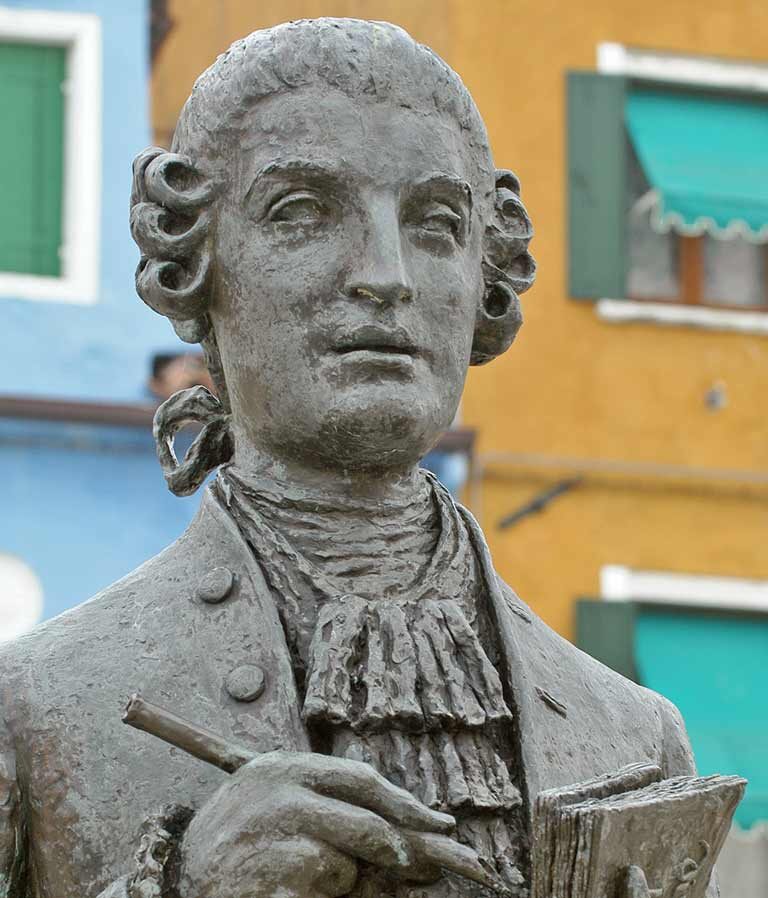In unraveling the musical enigma that is Baldassare Galuppi, one discovers not merely a composer but a luminary whose life’s composition harmonized with the diverse notes of history. This virtuoso’s journey weaves through Venetian waters, European concert halls, and the cosmopolitan tapestry of global acclaim, leaving behind a legacy that echoes through the corridors of classical music.
Baldassare Galuppi (Venetian Composer) Interesting Facts
Baldassare Galuppi, an intriguing figure in the realm of classical music, comes with a tapestry of unexpected tales. Born on the quaint island of Burano in the Venetian Republic on October 18, 1706, Galuppi’s roots trace back to the rich cultural soil of the Venetian archipelago. The scenic backdrop of his birthplace undoubtedly played a role in shaping the artistic spirit that would later manifest in his compositions.
1. The Galant Harmony of a Generation
Immersed in the musical zeitgeist of the 18th century, Baldassare Galuppi found himself amid a distinguished cohort of composers. This cohort, including luminaries like Johann Adolph Hasse, Giovanni Battista Sammartini, and C. P. E. Bach, collectively wove the intricate tapestry of Galant music across Europe. Galuppi’s compositions stand as a testament to this era, characterized by its elegance and expressive charm.
2. A Global Sonata
Beyond the confines of his Venetian roots, Baldassare Galuppi’s melodies traversed continents, earning him the acclaim of a global audience. His notes resonated in the grand concert halls of Vienna, the cultural epicenter of London, and even the imperial courts of Saint Petersburg. Despite these cosmopolitan exploits, Venice remained the heartbeat of his musical journey, a city where he assumed prestigious roles and solidified his place among the musical elite.
3. Venetian Virtuoso’s Key Positions
Within the intricate symphony of Galuppi’s career, Venice served as the primary score, where he orchestrated his ascent to musical eminence. Holding a succession of eminent positions, Galuppi became a cornerstone of the city’s musical identity. His influence echoed through the canals and alleys, leaving an indelible mark on the city that nurtured his prodigious talent.
7. The Prolific Career of Baldassare Galuppi
Baldassare Galuppi, a distinguished figure in the musical landscape of 18th-century Venice, dedicated his professional life to the service of philanthropic and religious institutions. His most renowned position was that of maestro di cappella at the illustrious Doge’s chapel within the majestic St Mark’s Basilica. In this influential role, Galuppi composed an extensive body of sacred music, leaving an indelible mark on the musical heritage of his era.
8. Maestro and Composer Extraordinaire
Galuppi’s multifaceted talents extended beyond the realm of composition. Not only was he a revered composer, but he also showcased exceptional proficiency as a keyboard virtuoso. His prowess on various keyboard instruments further solidified his reputation as a versatile musician. Galuppi’s compositions were not confined to a single genre; rather, they encompassed a diverse range, reflecting his mastery in creating music that resonated with both sacred and secular contexts.
9. The Forgotten Melodies: Galuppi’s Musical Decline
Despite Galuppi’s prominence during his lifetime, his musical legacy faced an unfortunate decline outside the borders of Italy in the latter half of the 18th century. The intricacies and beauty of his compositions were overshadowed by changing musical tastes and evolving trends. As a result, the once-celebrated maestro’s name gradually faded into obscurity.
10. Napoleonic Upheaval: The Scattering of Manuscripts
The tumultuous events surrounding Napoleon’s invasion of Venice in 1797 played a pivotal role in shaping the posthumous fate of Galuppi’s musical creations. The invasion triggered a dispersal of Galuppi’s manuscripts across Western Europe, exposing them to the perils of destruction. Many of these invaluable documents met unfortunate fates, with some being consigned to flames or lost in the chaos that ensued. The invasion, inadvertently, became a historical juncture that altered the trajectory of Galuppi’s musical legacy.
More Interesting Articles
- 30 Ronald Reagan Interesting Fun Facts- 40th US President
- 34 Jackson Pollock American Artist Interesting Fun Facts
- 50 Salvador Dali Spanish Artist Interesting Fun Facts
- 39 Michelangelo Italian Artist Interesting Fun Important Facts
- 21 Karl Marx Thinker Interesting Fun Important Facts
- 23 John Locke Philosopher Interesting Important Fun Facts
- 17 Dmitri Mendeleev Facts – The Father of Periodic Table
- 18 Fun Facts about Pocahontas – Colonial Settlement Leader
- 19 King Mansa Musa Facts – The Richest Man Ever from Mali
- The 10 Great Leaders of the French Revolution
- 11 Ares God of War in Greek Mythology Interesting Facts
- 11 Kratos Greek Mythology God of War and Power Facts
- 10 Thoth Egyptian God with Ibis Head Interesting Facts
- 23 Robert Frost Interesting Facts – Bio | Achievements | Works
- 21 Hercules Greek God Facts – Profile | Achievements | Labors
- 10 Top Romantic Era Poets – Bio | Works | Facts | Contributions
- 27 Martin Luther King JR – Biography | Interesting Fun Facts
- 10 Great Russian Novelists – Bio | Works | Contributions | Facts
- 24 Interesting Facts about Julius Caesar – Biography | Contributions
- 26 John F. Kennedy JFK – Biography – Fun, Interesting Facts
galuppi composer
interesting musical facts

